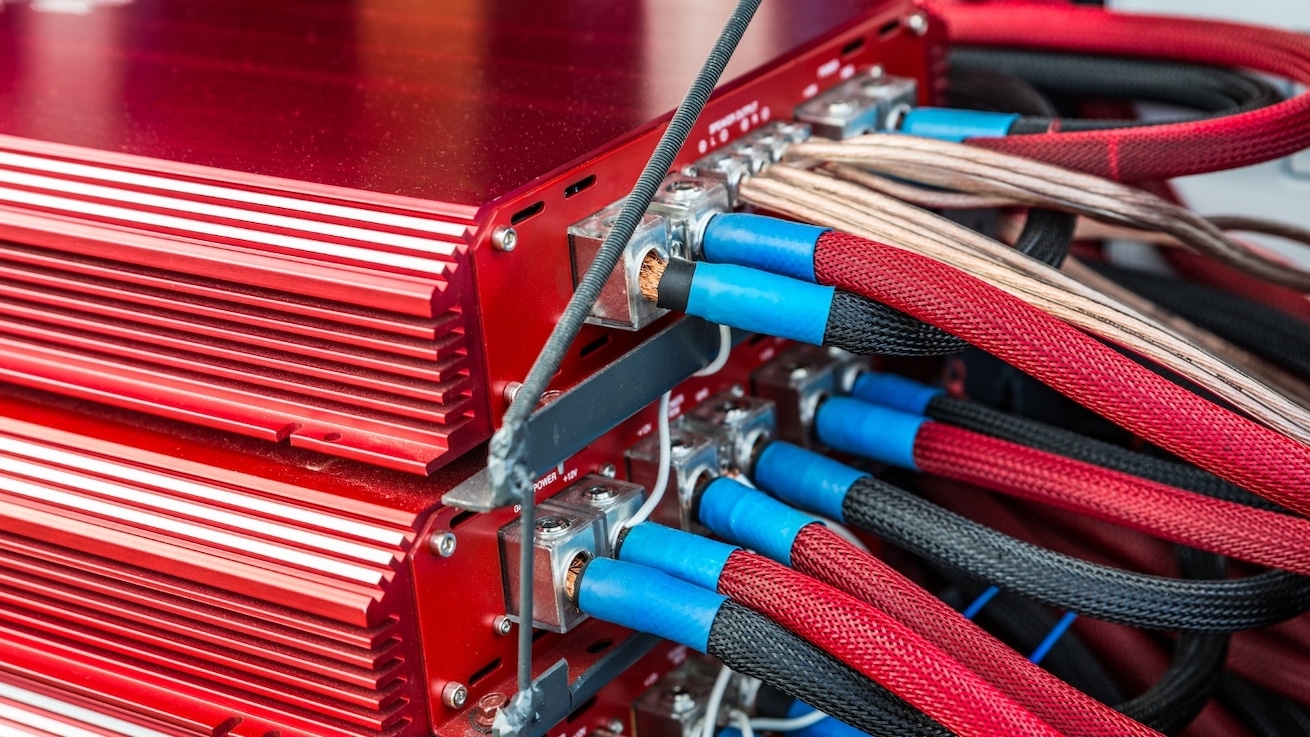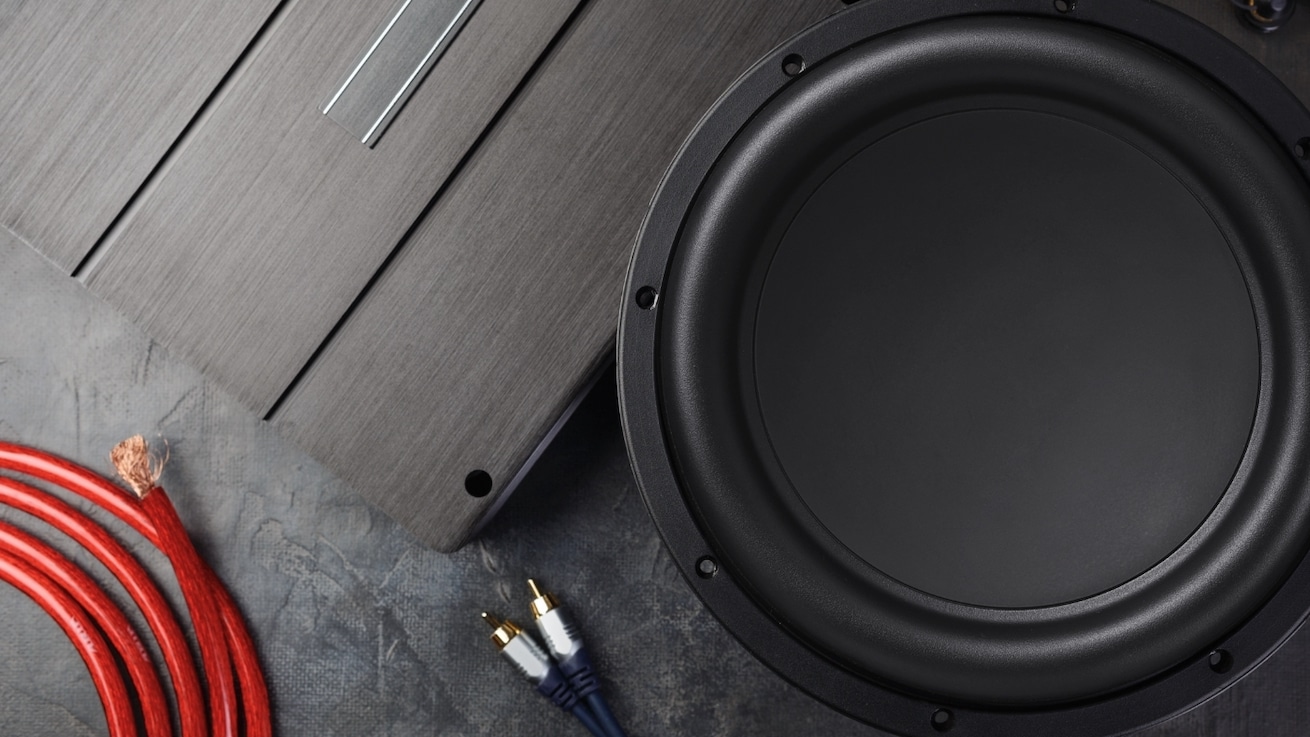What Is a Good Signal to Noise Ratio For An Amplifier?
What is a good signal to noise ratio for an amplifier? A good signal-to-noise ratio for an amplifier is typically considered to be 60 dB or above for a vinyl turntable, 90 dB or above for an amplifier or CD player, and 100 dB or above for a preamp. Generally speaking, a range of 25 dB to 40 dB is seen as good, while anything above 41 dB is regarded as excellent.
Few aspects of audio equipment performance are as crucial to achieving a high-quality listening experience as the signal-to-noise ratio (SNR). Despite its importance, many people are unaware of how this critical measurement affects the efficiency of their amplifiers.
In this blog post, you’ll gain a newfound appreciation for this often-overlooked aspect of audio operation and be better equipped to make informed decisions when selecting your next audio equipment.
Understanding Signal-to-Noise Ratio in Amplifiers
 In amplifier devices, the signal-to-noise ratio (SNR) is a key parameter. It measures the power of the desired signal against the noise floor, with superior sound quality indicated by higher values. It’s the quantifiable difference between the background noise generated by the device’s components and the signal at its nominal level, expressed in decibels (dB).
In amplifier devices, the signal-to-noise ratio (SNR) is a key parameter. It measures the power of the desired signal against the noise floor, with superior sound quality indicated by higher values. It’s the quantifiable difference between the background noise generated by the device’s components and the signal at its nominal level, expressed in decibels (dB).
An increased SNR suggests reduced distortion along with enhanced audio quality, both fundamental for achieving the targeted output power in hi-fi elements. The signal-to-noise ratio (SNR) is used to indicate how much louder the audio signal is than the noise.
For example, when the SNR is 100 dB, it implies that the sound of the audio is 100 dB higher than the noise level. The SNR calculation involves subtracting the noise value from the signal strength value, obtaining a measurable difference between the desired signal strength and the unwanted noise. This calculation provides crucial insights into the amplifier’s output at full power.
Defining Signal-to-Noise Ratio
The signal-to-noise ratio (SNR) is a measure of the difference between the desired signal and background noise, expressed in decibels (dB). It is applicable to various audio systems, including analog devices, and is crucial for achieving optimal audio output in these devices.
Some key points about SNR:
- It is a measure of the signal compared to the level of background noise.
- A higher SNR indicates a full-scale signal and less interference from noise.
- SNR is important for evaluating the efficiency of audio components, such as speakers and signal processors.
- Parameters like speaker sensitivity and signal processor performance rely on a high SNR.
Comprehension of SNR is particularly significant when handling amplified signals, as it helps to maintain the audio signal clear and devoid of a hissing sound.
In the world of audio reproduction, the two primary fundamental noises are Johnson–Nyquist noise (thermal resistance noise, also referred to as Johnson noise) and shot noise, also known as quantum noise. Optimizing components can help reduce these noise sources, improving the overall noise performance, although not completely.
Importance of Signal to Noise Ratio in Amplifiers
A healthy signal-to-noise ratio (SNR) is vital for maintaining clear sound with minimal hissing sounds in amplifiers, thus guaranteeing superior audio performance. A higher SNR results in a lower level of noise and a cleaner audio signal, thus improving the clarity and fidelity of the amplified sound.
Even a seemingly high output level of 97 dB can generate audible sound if the SNR is low, indicating that the noise level is close to the signal level.
Understanding and optimizing the SNR in your amplifier is a critical aspect of achieving the best possible audio experience. Choosing an amp with a high SNR and reducing noises guarantees a sound system that delivers sharp, clear audio with little interference.
Identifying a Good Signal-to-Noise Ratio for Amplifiers
Although an SNR of 80 dB or higher is generally considered desirable for audio amplifiers, it’s worth noting that an acceptable SNR can vary depending on the specific amp type and its intended application. Factors such as the design, layout, and power capacity of the amplifier can significantly affect its SNR.
For example, the power capacity of an amp does not directly impact its SNR, which is determined by the ratio of the signal power to the noise power and is affected by factors such as circuit design and shielding.
How to Improve Your Amplifier’s Signal to Noise Ratio

Enhancing an amplifier’s SNR requires optimizing the internal components, shielding, and managing the supply of power to curb noise and boost signal strength. Concentrating on these factors can vastly improve your amp’s overall audio output, leading to a superior listening experience.
Optimizing these components involves selecting electronics with an optimized design, which can improve the SNR. Additionally, effective shielding can help reduce external noise and interference, further improving SNR in your car audio system.
Optimizing Internal Components
Choosing electronics with optimized design can improve SNR. By focusing on factors such as:
- Input-referred voltage noise
- Input-referred current noise
- Flicker noise
- Popcorn noise
You can lower internal noise and enhance the overall SNR. In addition to selecting components made with premium material, it is important to consider the overall design of the amp, as this can have a significant impact on its signal-to-noise ratio.
Employing capacitors for noise filtering and integrating a low-noise amplifier (LNA) are just a few techniques that can be used to achieve less noise in amps.
Shielding and Power Supply Considerations
Effective shielding and power supply management play a crucial role in reducing interference, which in turn helps improve SNR. Shielding prevents environmental noise from entering the amp’s electronic circuitry, thus minimizing the effect of unwanted noise on the signal.
Enclosing the amp in a metal case or conductive material, using shielded cables, grounding the shields properly, and applying magnetic shielding are all effective techniques for improving SNR in amplifiers. Power supply management can also have a significant effect on amplifier SNR.
Frequently Asked Questions
What is the acceptable range of signal-to-noise ratio?
The accepted range of SNR is usually 20 dB to 40 dB for small devices, with the optimum SNR being 25 dB to 40 dB. SNR values of less than 15 dB can lead to poor connectivity, while those higher than 41 dB are considered excellent. A 10 dB improvement can significantly enhance the clarity and quality of the audio output.
What is the signal-to-noise ratio of 60 dB?
An SNR of 60 decibels indicates that the desired signal is 60 decibels higher than the background noise. This implies a 200% more signal strength relative to the measured noise strength. In simpler terms, this means that the audio signal is twice as strong as the unwanted hiss sounds. This ratio is significant in ensuring the clarity and quality of the sound produced by an amp.
Is 100 dB a good signal-to-noise ratio for speakers?
For optimal audio quality, it is generally recommended to have an SNR of 90 dB or more for amps or CD players, 100 dB or more for preamps, and at least 60 decibels or more for turntables. Anything higher than 40 decibels is considered excellent. With this amount of decibels, you can expect to hear the music with more clarity in the room or in your car’s audio system.
How does amplifier design affect the signal-to-noise ratio?
Amp design can significantly improve the SNR through component selection, circuit design, and shielding techniques, maximizing the strength of the high signal. To delve deeper into these aspects, let’s start with component selection.
The circuit design plays a crucial role in managing the flow of electrical current. A well-engineered circuit layout can minimize signal degradation and interference. This involves careful planning and execution to ensure that the components work together efficiently and the signal path is optimized.
Shielding techniques are employed to protect the device from external sounds. This includes physical shielding, such as metal casings or covers that block out electromagnetic interference from other electronic devices.
How can I improve my amplifier’s signal-to-noise ratio?
To improve your amplifier’s SNR, use shielded cables and power conditioners, and consider soundproofing measures. To reduce any unwanted interference, you can also try using better components and making sure that the grounding is done correctly.
Additionally, you can minimize signal degradation by keeping the amp away from sources of electromagnetic interference, such as other electronic devices or power cables.
Last Updated on: March 16, 2025

